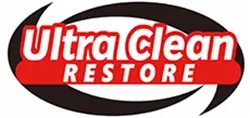
Contents
Flooding affects millions of homes in the U.S. each year, making effective decontamination essential for safety and health. If your home has been impacted, it’s important to understand the steps needed to restore it to a safe condition. From evaluating damage to using the right cleaning methods, each action plays a significant role in preventing long-term issues. Let’s explore how you can tackle this challenging situation effectively.
Key Takeaways
- Document all flood damage with photos and notes for insurance claims before beginning decontamination efforts.
- Wear protective gear, including gloves and masks, to ensure personal safety during cleanup.
- Use EPA-approved disinfectants and scrub surfaces thoroughly to effectively clean contaminated areas.
- Dispose of unsalvageable materials, like carpets and drywall, following local regulations for hazardous waste.
- Maintain indoor humidity below 60% and ensure proper ventilation to prevent future mold growth.
Assessing the Extent of Flood Damage
Before you begin the decontamination process, you need to accurately assess the extent of flood damage in your home.
Start your flood assessment by documenting visible damage, including water stains, warped walls, and damaged flooring. Take photos and notes to create a detailed record for future reference and potential insurance claims.
Next, evaluate hidden areas, such as crawl spaces or behind appliances, where moisture may linger. Use a moisture meter to check for dampness in structural materials.
Once you’ve gathered this information, categorize the damage by severity—minor, moderate, or severe. This damage evaluation will guide your decontamination efforts and help prioritize repairs.
Ensuring Personal Safety and Protective Gear
As you prepare for the decontamination process, prioritizing your personal safety is vital.
Begin by equipping yourself with the necessary protective equipment. This includes gloves, masks, goggles, and sturdy boots, which safeguard against hazardous materials often found in floodwaters. These items protect you physically and enhance your confidence during the cleanup.
Next, focus on personal hygiene. Before starting, wash your hands thoroughly and make sure you have access to clean water throughout the process. After handling flood-damaged materials, it’s essential to clean your hands and face to prevent any harmful contaminants from spreading.
Keep a first aid kit nearby in case of accidents. If you feel unwell at any point, don’t hesitate to take a break or seek medical advice.
Effective Cleaning and Sanitization Techniques
Once you’ve ensured your safety, it’s essential to implement effective cleaning and sanitization techniques to restore your home.
Different surface types require specific approaches, and using the right chemical solutions is vital for thorough decontamination.
Here are four key techniques to take into account:
Identify Surface Types: Determine whether surfaces are porous (like wood) or non-porous (like tile) to choose the appropriate cleaning method.
Use Chemical Solutions: Select EPA-approved disinfectants that are effective against flood-related pathogens, ensuring they’re suitable for the surface type.
Scrub Thoroughly: Employ scrubbing brushes or pads to agitate contaminated surfaces, allowing chemical solutions to penetrate effectively.
Rinse and Dry: After cleaning, rinse surfaces with clean water and dry them completely to prevent mold growth.
Implementing these techniques will help create a safe, sanitized environment for you and your family.
Proper Disposal of Contaminated Materials
After implementing effective cleaning and sanitization techniques, it’s important to address the proper disposal of contaminated materials.
Start by identifying items that are beyond salvage, such as carpets, drywall, and insulation, which may harbor hazardous waste. Always wear protective gear when handling these materials to ensure your safety.
For disposal, check your local regulations regarding hazardous waste. Many communities have designated facilities where you can safely dispose of these items.
Additionally, explore recycling options for materials like metal or certain plastics, as this can reduce landfill waste and promote sustainability.
When in doubt, consult with professionals who specialize in flood damage recovery, as they can guide you through the process.
Proper disposal protects your health and contributes to a safer environment for your community.
Preventing Future Mold Growth and Water Damage
To effectively prevent future mold growth and water damage, it’s essential to address moisture control within your home.
Implementing the following strategies will help create a healthier living environment:
Use Mold Resistant Materials: Opt for mold resistant drywall and paint, especially in high-moisture areas like bathrooms and kitchens.
Maintain Humidity Control: Keep indoor humidity levels below 60% by using dehumidifiers and air conditioning units.
Ensure Proper Ventilation: Install exhaust fans in bathrooms and kitchens to facilitate air circulation and reduce moisture buildup.
Regularly Inspect for Leaks: Check plumbing and roofing regularly to identify and fix leaks before they lead to significant water damage.
Review
Decontaminating flood-damaged homes is vital for safety and health. Remember, flood-damaged homes develop mold within 24 to 48 hours if not properly treated. By wearing protective gear, using EPA-approved disinfectants, and ensuring thorough drying, you can greatly reduce health risks. Don’t hesitate to consult professionals for extensive damage. Taking these steps restores your home, protects your well-being, and strengthens your recovery efforts.
Recent Posts
Why Is Biohazard Decontamination Crucial After Flooding?
After a flood, the aftermath can feel like a battleground, with contaminated water lurking like
Top Biohazard Decontamination Tips for Flooded Homes
Flooded homes present significant biohazard decontamination risks that many overlook, especially when it comes to
What Is Biohazard Decontamination for Flooded Homes?
When floodwaters recede, they often leave behind more than just moisture; they can introduce serious
